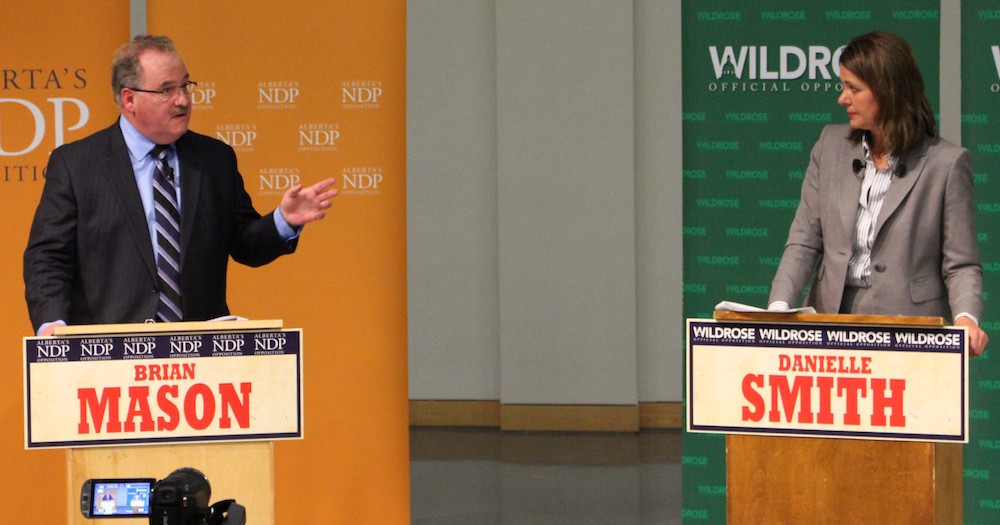
Perhaps one of the most unexpected developments in Alberta politics in 2013 was the emergence of the informal alliance between the New Democratic Party and the Wildrose Official Opposition.
It was not uncommon in 2013 to see NDP and Wildrose MLAs working together, or tackling the same issues during Question Period on the floor of the Assembly, but the informal alliance existed outside the Dome.
NDP leader Brian Mason and Wildrose leader Danielle Smith toured the province holding one-on-one policy debates in college and university campus lecture theatres. The debates were very well attended, and they were certainly more entertaining and informative than a mid-election leaders debates. I cannot remember when two party leaders last debated in this type of public forum. It was refreshing.
Last year, the NDP struggled to find their footing in the new political environment created by the 2012 election. Accustomed to running circles around the Liberal official opposition, the NDP were not yet accustomed to competing with the more conservative Wildrose official opposition. With this informal alliance, and a consistent message, the NDP found their footing in 2013. They may not be on the cusp of forming government, but they are receiving much more media coverage and public attention than they were in 2012.
Although the two parties worship different ideologies, there is a kind of mutual respect between the two groups because of their defining ideologies (example: social democracy and libertarianism). There also exists a mutual distaste of the wishy-washy moderate politics of the Progressive Conservatives and the Liberals.
Most recently, the Wildrose and NDP (and Liberals) stood together in opposition to Premier Alison Redford‘s hastily introduced Bill 45 and Bill 46, which stripped away collective bargaining rights of public sector workers and attacked free speech rights of ordinary Albertans. It was a strange sight to see the Wildrose defending the rights of public sector workers. But their opposition to the anti-labour laws was not a show of support for organized labour, but a reflection of their libertarian values around freedom of speech and expression.
And, not unexpectedly, there is an electoral strategy element to this informal coalition.
If the Wildrose is to defeat the PCs in the next election, they need to win votes away from the governing party and they need other parties to do so as well. As the Wildrose does not have a strong base of support in Edmonton, the NDP are well-positioned to steal votes away from the Tories in the provincial capital.
Will the NDP Wildrose alliance survive 2014?
As with any alliance of convenience, the effort will succeed as long as the groups involved are able to work together to achieve similar aims. Like the informal alliance between Stephen Harper‘s Conservatives and Jack Layton‘s NDP before the 2006 election that toppled Paul Martin Liberals, I expect the two groups will continue down this path until the ballots cast in the next provincial election are counted. After that, all bets are off.

4 replies on “Alberta politics 2013: The NDP Wildrose alliance”
Wildrose has a larger base than people make it out to be in Edmonton, if we go solely off of election results – they had a larger vote percentage than the Liberals, and were only 2% behind the NDP. Problem is, their votes were spread around the city and suburbs while the NDP and Liberals were more concentrated (this becomes even more notorious in Calgary, where the Wildrose tripled the popular vote of the Liberals but only got 2 seats to the Liberals’ 3).
Great analysis, Dave!
My biggest disappointment is what campus the Brian & Dani show chose to skip: Grande Prairie Regional College. This community has a demographic not that dissimilar to that of Fort McMoney, and I’m sure they would have drawn quite a crowd.
Jerry, we tried to find a group at GPRC to host the debate, but we’re unable to do so. We did hope to hold a debate in Grane Prairie.